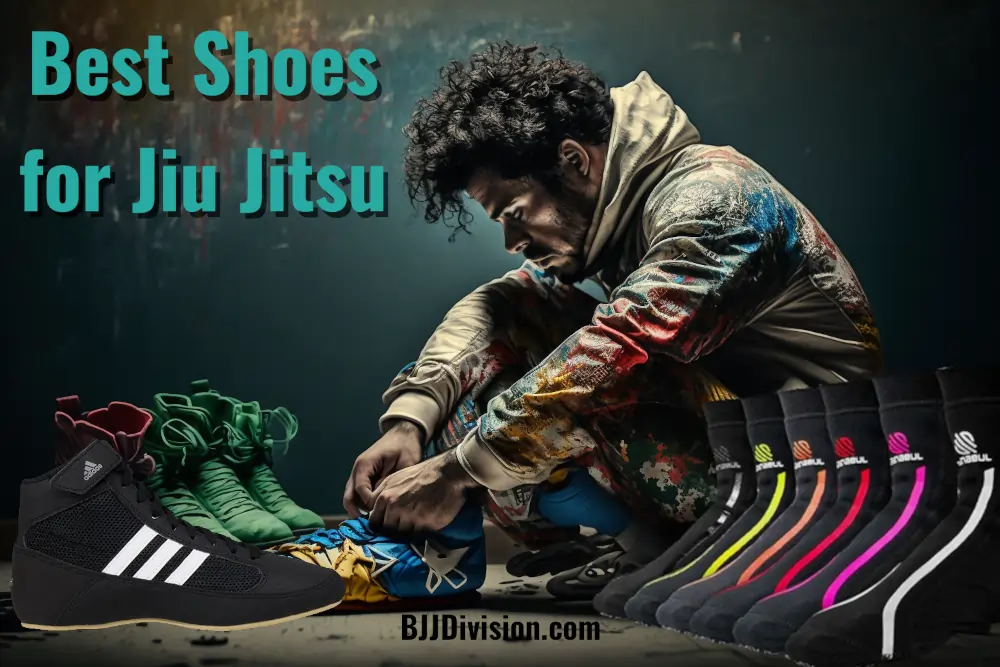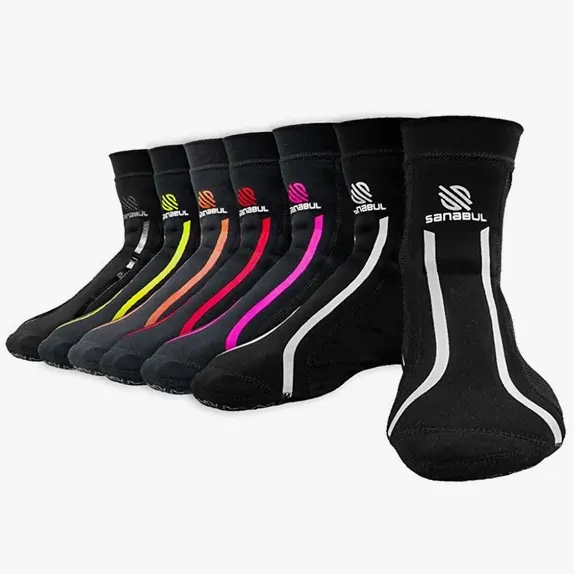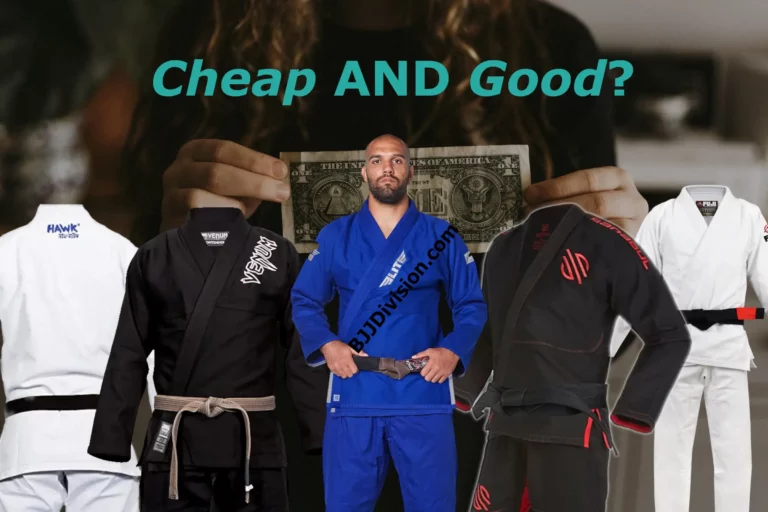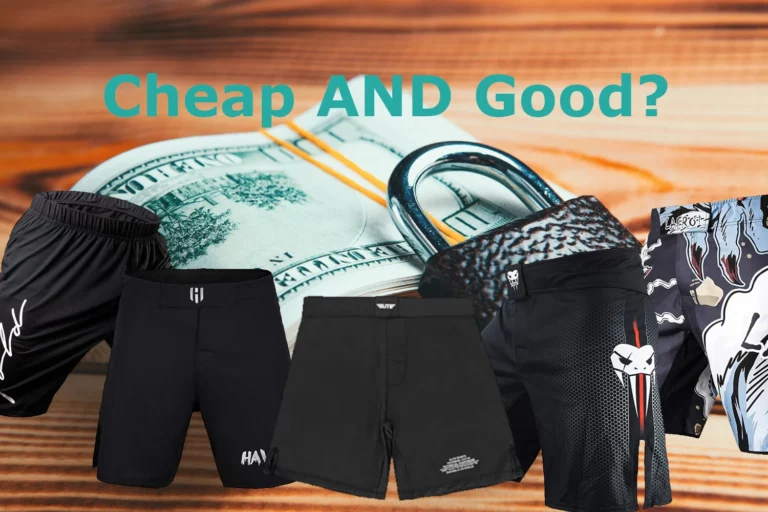Best BJJ Shoes: 4 Great Shoe Options for Brazilian Jiu Jitsu

Brazilian Jiu-Jitsu is usually done barefoot, but there might be situations that justify wearing special BJJ shoes or other grappling footwear.
Can you wear shoes for doing Jiu Jitsu?
Which shoes are the best for BJJ?
Can you wear wrestling or sambo shoes for BJJ?
As with any sport, it’s essential to have the right gear, and that includes the right footwear. In this blog post, we’ll be discussing BJJ shoes and the roles of flip flops, wrestling shoes, sambo shoes, and BJJ footwear in general.
BJJ Shoes: What Options do you have?
For practicing Jiu Jitsu you should only wear footwear that was designed specifically for BJJ or other grappling sports. BJJ shoes should have the following features:
- Lightweight
- Durable
- Provide excellent traction on the mat
- Flexibility: allowing the wearer to move their feet freely during training or competition.
Let’s see what options you as a Jiu Jitsu practitioner have:
Jiu Jitsu Shoes
Some brands have started selling lightweight bjj shoes or bjj socks that are specifically designed to be worn when training in Brazilian Jiu Jitsu.
These BJJ shoes are lightweight, don’t influence the anatomy of the foot, and enable you to train as if you were barefoot. Nevertheless, they will still give you a lot of grip and traction on the mats and protect your foot and skin from damage.
Our favorite version of the BJJ shoe so far is the following lightweight shoe by Sanabul:

We have no negatives for this kind of BJJ shoe and you should definitely give it a try. You may need two pairs as the shoes should be washed regularly.
Wrestling Shoes
Wrestling shoes are probably the most popular choice of shoes for BJJ practitioners.
They’re designed for use on the mat and therefore provide excellent traction and stability. They’re also designed to be lightweight, allowing the wearer to move quickly and freely, and usually aren’t too rough or abrasive. Wrestling shoes come in a variety of colors and designs, making it easy to find a pair that fits your foot and matches your style.

However, although wrestling shoes are great for wrestling and have a lot of great features, they are not ideal for Jiu Jitsu.
Most BJJ athletes refrain from wearing wrestling shoes for the following reasons:
This doesn’t mean you can’t wear wrestling shoes for Jiu Jitsu. A great example of good use for wrestling shoes in BJJ is a foot injury, as recovery can be promoted by wearing protective shoes. Just be sure to make all the arrangements necessary, and know that you won’t be able to wear them for competition.
Sambo Shoes
Obviously, Sambo shoes are designed for use in Sambo, a grappling art that has similarities to BJJ and wrestling.
Just like wrestling shoes, Sambo shoes are designed to provide grip and traction on the mats as well as support for the foot.
However, Sambo shoes have a suede sole and therefore have no way near the level of traction on the mat a wrestling shoe has. This means wrestling shoes are better for resisting techniques like foot sweeps. On the other hand, Sambo shoes allow for faster and easy turning, which enables the athlete to perform turning throws more easily.
On top of that, wrestling shoes are designed to provide greater ankle stability than Sambo shoes.
In conclusion, Sambo shoes can be a viable option for BJJ. Keep in mind the negative points mentioned above for wrestling shoes, as Sambo shoes are also not allowed in Jiu Jitsu competitions.
Jiu-Jitsu Flip Flops
Flip flops are a popular choice for BJJ practitioners. They’re lightweight, easy to slip on and off, and easy to clean. They are great for wearing around the gym, locker room, and sanitary areas.
Although they have their place, flip flops can obviously not be worn on the mats while training or competing in Brazilian Jiu Jitsu.
Best BJJ Shoes
Now what are the best BJJ shoes?
If you read the rest of the article, you can probably guess that we recommend training barefoot if possible. This is the way Jiu Jitsu is meant to be done and has been done for many years. Consider that you will most likely have to compete without shoes anyway.
If you are looking for a lightweight option, we recommend a lightweight BJJ shoe or sock like the Sanabul Jiu Jitsu shoe mentioned above. It will protect your skin and offer grip while not limiting flexibility.
However, if you need additional support and stability because of an injury, we recommend a wrestling or Sambo shoe, like the Adidas Men’s HVC Wrestling Shoe.
Boxing shoes are not a great option for Brazilian Jiu Jitsu as they are too clunky, rigid, and abrasive.
BJJ Shoes FAQ
Everything you need to know about shoes in Brazilian Jiu Jitsu in a short and concise format:
Conclusion
BJJ footwear is not a topic on the mind of most BJJ athletes, as we mostly train barefoot. Nevertheless, a pair of flip-flops belongs in any Jiu Jitsu gym bag.
Whether you choose to or need to wear BJJ shoes, wrestling shoes, or sambo shoes comes down to your individual situation. We provided you with the most important information on BJJ footwear. Now it’s your time to get on the mats and let your feet do some work, with or without shoes.
Feel free to check out our other guides on BJJ equipment, like Gis, rash guards, shorts, spats, mouthguards, and cups.






